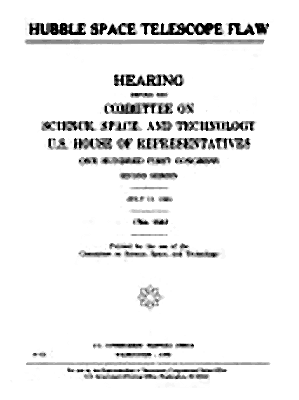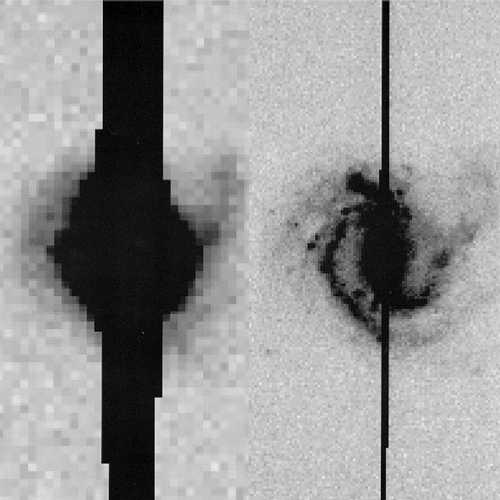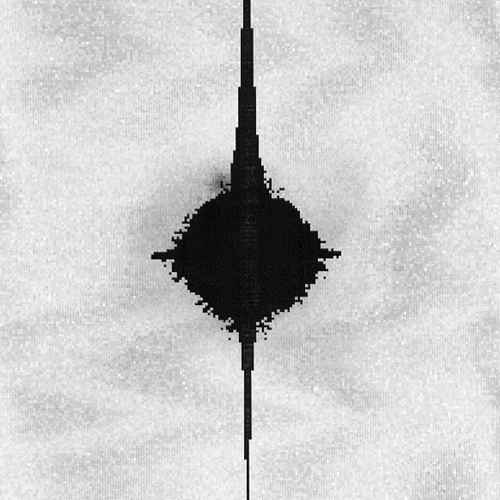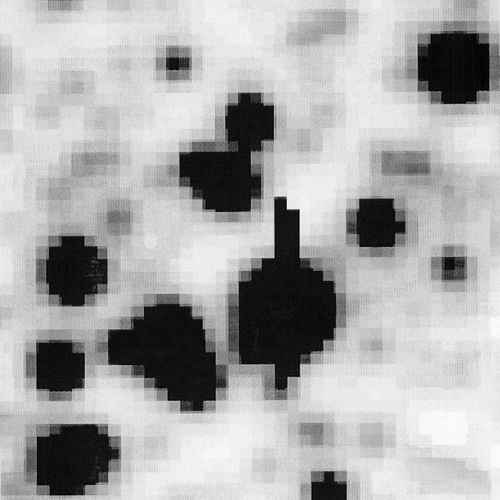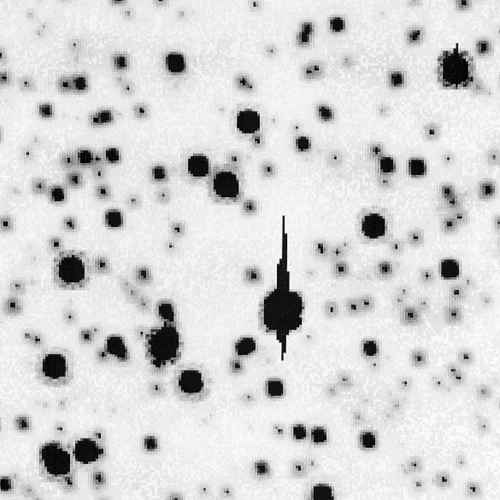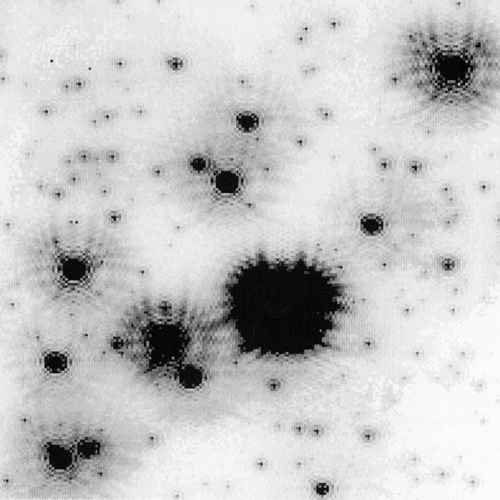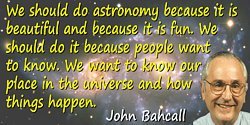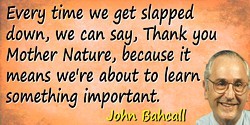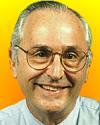 (source)
(source)
|
John N. Bahcall
(30 Dec 1934 - 17 Aug 2005)
American astrophysicist who pioneered the development of neutrino astrophysics in the early 1960s. He theorized that neutrinos (subatomic particles that have no charge and exceedingly weak interaction with matter) can be used to understanding how stars shine.
|
STATEMENT TO THE
SUBCOMMITTEE ON SPACE SCIENCE AND APPLICATIONS
OF THE
U.S. HOUSE OF REPRESENTATIVES
Washington, D. C.,
July 13, 1990
Science with the Hubble Space Telescope
by
John N. Bahcall
The Institute for Advanced Study, Princeton, NJ 08540
Introduction
Thank you for the opportunity for sharing with you the heartbreaking disappointment that all of us in the Hubble Space Telescope (HST) program feel in the delay in achieving some of our most important scientific objectives. I want to assure you that every person in the program is dedicated to making certain that three or five years from now you do see the beautiful and important pictures of the universe we have been promising you and the American people for almost two decades. I speak to you today as President of the American Astronomical Society, as a member of the scientific working group of the HST since its inception in 1973, and as the principal investigator on one of the Key Projects of the HST scientific program, as well as a principal investigator on several smaller HST projects.
Let me begin by reminding you of the advantages of the Hubble Space Telescope over ground based telescopes. The principal advantages are twofold: 1) Sharper images and 2) A wider range of colors. The first advantage, clarity of vision, is severely compromised by the wrong prescription to which the mirror was ground. The cameras aboard HST, while working perfectly, cannot be used now to see with the precision that was planned. Corrective action is required. The second advantage, the wider range of colors that can be viewed, is not affected. The HST is in orbit where the stars no longer twinkle, beyond the earth’s atmosphere. This will make possible in a few years images of astronomical objects with unprecedented resolution. The HST will have a sharpness of vision that is about ten times better than is usually obtained with the best ground based telescopes. HST will ultimately have a resolution sufficient to read the writing on a dime at the distance of three miles, or more technically, about one-twentieth of an arcsecond. This factor of ten improvement over the resolution typically available at the best ground based sites is crucial for many of the science projects that have been prepared for the observatory. Unfortunately, the HST Observatory, if it had feelings, would be feeling now pretty much like an All Star batter at home plate for the first time in a World Series with the eyes of the world on him, a batter who suddenly realizes he left his contact lenses at home. Fortunately, the observatory will be able to look in colors that cannot penetrate the earth’s atmosphere. To get a feeling for how much potentially this could increase our knowledge, think about what an incomplete picture you would have of this room if the only color you could see was green.
Outline of Talk
I will illustrate for you the impact on the science programs by considering a few important examples.
How do we determine the size of the Universe?
To determine the size of the Universe, we need to measure distances to galaxies that are running away from us. The fundamental law that is used here states that objects in the universe are expanding away from each other with a velocity that is proportional to their distance from each other, their separation. To visualize this situation, imagine that the galaxies are spots on the two-dimensional surface of an expanding balloon. Then each galaxy moves away from all the others with a velocity that is proportional to the distance between the galaxies. More distant galaxies separately more rapidly. With ground based observations, we can measure the speeds with which galaxies are moving away from us. We need to find some way of measuring their distances in order to find the scale of the universe. Stars that pulsate with a definite period, typically between two to sixty days, have fixed intrinsic brightnesses. Their period determines their wattage, a result established by ground based observations. Thus if we measure the periods of distant stars we know how intrinsically bright they are, how much light they are putting out. If we can measure also their apparent brightnesses, how much less bright they appear than similar stars seen in our own Galaxy, we will know how far away are the distant galaxies.
The high resolution of the HST will be used to identify individual pulsating stars among the tens of billions of other stars in the same direction. For distant galaxies, this can only be done from space. The velocity with which a distant galaxy recedes from us is proportional to its distance from us. The proportionality constant, known as Hubble’s constant, measures the expansion rate of the universe. In the expanding balloon analogy, the proportionality constant depends upon the amount of air you blow into the balloon every second. The inverse of this constant is a measure of the age of the universe; the inverse of Hubble’s constant describes how long the universe must have been expanding in order for the galaxies to reach their current separations. This age is roughly ten to twenty billion years, but we hope to determine the value more accurately with HST.
These important objectives of determining the size of the universe and its age can only be addressed properly by the HST telescope once the corrective optics are supplied to the new cameras.
The reason is that one must measure accurately the brightness of individual pulsing stars in the presence of many other stars in distant galaxies. With the equivalent of corrective contact lenses, the telescope cannot see clearly enough to decide how much light comes from the many stars that appear closely packed together.
What are quasars?
Quasars are the most distant and luminous objects known in the Universe. They can be observed all the way back to the early childhood of the Universe (more than 95 percent of the way back to the beginning of cosmic time), corresponding to something like a four year old for an average human life span class. The total light emitted by these enigmatic objects is equivalent to the light from a thousand billion stars. In pictures taken with ground based telescopes, quasars nevertheless look like single point-like stars, with some barely visible evidence of indistinct smudges surrounding the nearest quasars.
Most astronomers believe that quasars are something that happens to a galaxy, either the death throes of an old galaxy or the birth pangs of a young galaxy. Or, perhaps, the violent collision of two galaxies.
With ground based telescopes, we cannot see the galaxies that we believe are associated with quasars because light from the star-like central quasar image is smeared out by the earth’s atmosphere so that the faint diffuse light from the associated galaxy is hidden. With HST, we hope to see the light from the mother galaxies of the quasars and to find out if quasars are galaxies in the process of being born, or old galaxies in the final stages of some terminal disease. We hope that knowing where quasars form will help us gure out how they shine.
This program of unmasking the quasars cannot be done until the cameras get contact lenses. Figure 1 compares the image that will be obtained with the telescope when the cameras are corrected with the image that can be obtained from the ground. You can see from this figure that we should ultimately be able to tell in what kind of galaxy, if any, quasars live. Figure 2 shows what we can expect to see with the current optics. I have two approved HST research programs that involve taking pictures of about 20 quasars. I will defer these programs until the cameras are repaired.
Are there imaging programs that can be done without contact lenses?
The HST mirror results, without any corrections, in a sharp focusing of part of the light that is better than can be achieved from the ground. For a small fraction of the programs that were planned with HST, the principal scientific aims can be achieved without serious compromise by concentrating on the small part of the light that is tightly focused. Figures 3-5 illustrate the advantages and limitations of the images that can be taken without correction compared with what is available from the ground and with what will be possible when the new cameras are installed.
Mostly good news
The ability of the telescope to look in different colors, especially in the ultraviolet, is not compromised. The spectrographs can be used for the great majority of the original programs in which high spatial resolution was not also combined with color resolution.
Unfortunately, there is a loss of efficiency. In order to obtain the color resolution that is required for most of the programs the light from the stars must be directed through a small hole. Because the light is not well focused, much of it cannot be used. Different programs will be affected in different ways by this problem. For the longest exposures, which involve some of the most interesting science, the required extra spacecraft time may be four times longer. For shorter exposures on brighter objects, the net increase in spacecraft time may only be an additional 10 percent or so. Let me give you an example of the kind of science that can be done with the spectrographs on the HST.
What is there between us and the most distant objects in the Universe?
With the HST, we will use quasars-the most distant and brightest objects we know about in the universe-to illumine the path that light takes between us and these distant sources of light. We will use quasars as bright flashlights to reveal what there is between us and them, much as we use flashlights on earth to show what unknown things face us in the dark.
An example of the kind of question that will be answered by these observations is: How big are galaxies?
In 1969, Lyman Spitzer and I proposed a theory in which typical galaxies have huge halos of gas surrounding the bright regions in which stars are visible. According to this idea, the radius of a typical galaxy in gas is on the order of ten times larger than it appears on ground based pictures of the light emitting regions of the galaxy. The proposed halos are dark and do not emit starlight. This suggestion will be tested definitely with HST by observing light from distant quasars that passes near, in projection, the images of galaxies that are along the line of sight between us and the quasars. If the galaxies are as big in gas as we suggested, then they will block off light from the quasars even when the galactic image, taken in starlight, appears to be relatively far from the line of sight to the quasar.
This project can only be done from space because the strong absorption caused by relatively nearby galaxy halos (or by intergalactic clouds) are in the ultraviolet region of the spectrum, which does not penetrate the earth’s atmosphere.
All of us want to know if there are intelligent beings on planets around other stellar systems.
What can the HST tell us about the existence of planets around other stars than our sun?
Scientists using the HST will search for planets around nearby stars in two different ways. Astronomers will attempt to image the planets around other stars using both cameras on the HST. It may be much easier to detect the material out of which planets formed, the rotating disks out of which planets like our own (the earth) are believed to have developed. There are many observations planned of stars in the Taurus constellation which may reveal that a number of these young stars have disks which will ultimately form planets.
Other astronomers will try to detect planets using the indirect wobbling motion of the stars caused by the gravitational pull of their hypothetical planets. These observations will be very difficult, but are obviously of great importance and of public interest.
Observations that involve imaging of planets or disks around other stars will have to be deferred.
Observations that search for the wobbling motion with the Fine Guidance System are possible with the existing optics.
Will we learn great things?
I am convinced that the telescope and the instruments will function, after correction, as designed. The HST should then provide at least partial answers to the fundamental questions which we have just discussed. I cannot tell you how long this take. We will have answers to some questions, as well as new questions, by the end of this year. Other questions, such as the size and age of the universe, will have to be deferred. until the new instruments are ready. But, we will succeed-and on a time scale short compared to the ages of the stars.
As marvelous and as difficult an achievement as the fulfillment of this promise will be, I personally will be disappointed if this is all that HST does. I believe that the most important discoveries will provide answers to questions that we do not yet know how to ask and will concern objects that we can not yet imagine.
In my personal view, a failure to discover unimagined objects and answer unasked questions, once HST functions properly, would indicate a lack of imagination in stocking the Universe on the part of the Deity. All of the scientists in the HST program share a common faith-a faith that sustains in the face of temporary setbacks-a faith that we will not be disappointed, that there is more in the universe than is in our theories. I hope very much that you will invite us back to share these discoveries with you in happier times.
Questions from the Chairman
The CHAIRMAN. The committee will reconvene. The other members are working their way back. Again, it was a double vote; we can’t help that.
I think what would be constructive for us, if I may, all of your statements, of course, will appear—I’ll ask unanimous consent that all of your statements appear in the record, and I agree to the unanimous consent, but I think what would be helpful to us, if the others arrive back here, hopefully, is we want to get on the record—and I think you started to do that, Dr. Bahcall—the point of view, coming back, I guess, 360 degrees, you might say, from where we started out this morning, that there were levels of technology and levels of achievement that were planned when the telescope was designed.
And I’m sure you folks worked and said, “Well, these are the particular things we’re going to attempt to do on that,” and therefore the telescope was designed accordingly. Now, the question I think that’s very important to the American people at this juncture, because we asked them is this a dud or not a dud, and so forth, is that as they’ve explained that they would hope to be able to work out a methodology by 1993 to improve the cameras, change lenses, and so forth, and get back up there and install them, do you see from your professional and technical expertise that the Hubble can and will do what we originally thought it was supposed to do, after making these changes?
Dr. BAHCALL. Yes, sir, I do. I don’t have any doubt about that.
The CHAIRMAN. Will it be able to do everything that you had envisioned in its original design?
Dr. BAHCALL. Well, sir, my original involvement with the program was in 1973, and at that time I was convinced that we shouldn’t have a telescope any smaller than three meters. The Congress instructed us in 1975, I believe it was, to come back with a less expensive program and to seek international involvement, so there were certain programs that we couldn’t do with a 2.4 meter telescope that we could do with a three meter telescope just because it was more efficient, and we had even hopes for a larger program. But since the design of the telescope was finalized somewhere around 1977 and 1978, those programs, I think, we will be able to do once the optical correction are made that NASA’s planning to make.
The CHAIRMAN. But where I’m coming from, again, for clarity in the record, the Hubble as it was finalized would have achieved certain goals if the aberration didn’t take place. At least, as far as we knew, right?
Dr. BAHCALL. Yes, sir.
The CHAIRMAN. Now, the question that’s before us is two-fold. As we get further into this situation, we will have to ascertain what, if any, additional costs are involved and all the other things that would go with it, because I think what the American people are going to say, and see if this makes sense to you, that we have a 15-year program, we designed a machine to do particular things, we can’t do the things we wanted to do up front because of this problem. That’s correct, I believe, is it not?
Dr. BAHCALL. Well, we can’t do some of those. We can do some of the things.
The CHAIRMAN. Okay, we can do some of them but not the optimum that we had planned on doing.
Dr. BAHCALL. That’s certainly correct.
The CHAIRMAN. All right. Now, if NASA does its bit and the Congress goes along and approves it in, say, in 1993 or thereabouts or whatever, and we go ahead and we make the changes that were discussed today as far as the mirrors and lenses were concerned on the new second generation equipment to come in, do you see when that’s achieved, assuming it’s achieved correctly, that we will be able to get the same yield out of the Hubble telescope, maybe over a different period of use in time, but within that 16-year period, that we would have gotten out of it if the aberration had not taken place?
Dr. BAHCALL. Sir, I think integrated over 15 years that the program will be essentially what we had promised the American people that we would do.
The CHAIRMAN. Do you see the import of that now?
Dr. BAHCALL. I certainly do.
The CHAIRMAN. And the next common denominator to that issue is going to be if that’s determined, if that’s correct, if that’s determined to be correct, then in that instance, what, if any, additional cost or how much additional cost is involved?
DR. BAHCALL. Yes, sir, but I would like to make a comment with respect to General Allen’s investigation, which I think is important in determining whether the hypothesis from which you start is correct. You start from the hypothesis that the corrections that NASA makes will remedy fully the problem that we have, and that’s the hypothesis that we’re all working from now, but I think it’s an extremely important aspect of General Allen’s investigation to find the smoking gun and to identify exactly what happened, because that will make it possible to make these corrections essentially exact. Otherwise, we will depend upon rather imperfect measurements in orbit. So that’s an aspect of his investigation which wasn’t touched upon by the committee this morning, but it’s a very important aspect for us technically.
The CHAIRMAN. So what you’re saying, basically, I think what I understand what you’re saying now, you’re saying if we can get the exact technical background data as to what happened and can measure it and so forth, that would give you the better tools to work with to improve the second generation instrumentation and so forth. Is that a fair commentary to make?
Dr. BAHCALL. That’s precisely it, sir, and it’s an answer to a question which was asked of General Allen this morning, what good does it do us to find out what happened; isn’t the only thing that we’re interested in is seeing that it doesn’t happen in the future? For us, in order to ensure that we—
The CHAIRMAN. That’s an important dimension. I hear what you’re saying. That’s a very important dimension.
Dr. BAHCALL. Yes, sir.
The CHAIRMAN. One of the things we were just talking about up here, we’re going to put together a document to forward on to Admiral Truly and so forth integrating some of these additional ideas that the committee wants them to expand their charter on. But your point is well-taken. You’re saying that if we can get the exact technical data or exact as possible, it will be helpful in deciding how you go ahead and improve from there. I understand that. All right. We’ll do that. We’ll see that that’s done. Is there any other particular statement that anyone would like to make for the record at this point or an observation or a comment? I know you’ve come a long way, and it’s been a trying day, but it’s been a productive day, I believe.
Dr. BAHCALL. We’ve learned to understand, sir, how repeated delays can occur in the space telescope program.
The CHAIRMAN. We’ve learned how repeated delays can take place in trying to get a bill through on the floor of the House, too, I agree with you.
Dr. BAHCALL. That’s precisely right.
The CHAIRMAN. I didn’t miss that, Doctor.
(1) Quasars are the most luminous known objects in the Universe. They are often a thousand times brighter than our entire galaxy, but their most astonishing feature is that this energy is generated in a volume not much larger than the solar system! Quasars are typically at large distances (billions of light years), so we cannot study their surroundings in much detail because of the blurring caused by the Earth’s atmosphere. This figure is a computer simulation of observations of a famous bright quasar (3C 273) viewed by a ground based telescope (left) and the Hubble Space Telescope (right). Most astronomers believe that quasars reside at the centers of galaxies; this image shows the appearance of a spiral galaxy like the Milky Way (our galaxy) if such an object surrounded this quasar. The turbulence in the Earth’s atmosphere spreads the light from the quasar so much that this galaxy would be undetectable with ground based telescopes. Simulations produced at the Institute for Advanced Study by John Bahcall and Don Schneider.
(2) This is how the previous simulation of 3C 273 would appear with the measured HST optics through the Wide Field Camera. Note that the characteristics of the galaxy are not discernible in this image. The reproduction shown here was made using processing equipment developed at the Institute for Advanced Study by Don Schneider, David Saxe, and John Bahcall.
(3) This is a simulated image of the central 8.6 arc seconds of the Galactic globular cluster M13. The seeing in this picture is 0.5 arc seconds, a value rarely, but occasionally, achieved with ground based telescopes. The reproduction shown here was made using processing equipment developed at the Institute for Advanced Study by Don Schneider, David Saxe, and John Bahcall.
(4) The same region of M13 as viewed with the planned HST optics through the Planetary Camera. The exposure levels are identical with ground based data. The reproduction shown here was made using equipment developed at the Institute for Advanced Study by Don Schneider, David Saxe, and John Bahcall.
(5) The same region of M13 as viewed with the measured HST optics through the Planetary Camera. The exposure levels are identical with the ground based data. The reproduction shown here was made using processing equipment developed at the Institute for Advanced Study by Don Schneider, David Saxe, and John Bahcall.
On the ASI website, John Bahcall described the reason for this statement: “This hearing was held in response to the discovery of the aberration in the Hubble mirror. My testimony, reproduced here, described the implications of the mirror flaw for science and the determination of the scientists to help find a solution to the problem. It was a traumatic period for everyone involved with the HST.”
- Science Quotes by John N. Bahcall.
- 30 Dec - short biography, births, deaths and events on date of Bahcall's birth.
- John N. Bahcall - context of quote “We're about to learn something important” - Medium image (500 x 250 px)
- John N. Bahcall - context of quote “We're about to learn something important” - Large image (800 x 400 px)
- John N. Bahcall - context of quote “We should do astronomy because it is beautiful” - Medium image (500 x 250 px)
- John N. Bahcall - context of quote “We should do astronomy because it is beautiful” - Large image (800 x 400 px)
- John N. Bahcall - context of quote “The most important discoveries” - Medium image (500 x 250 px)
- John N. Bahcall - context of quote “The most important discoveries” - Large image (800 x 400 px)
- Neutrino Astrophysics, by John N. Bahcall. - book suggestion.
